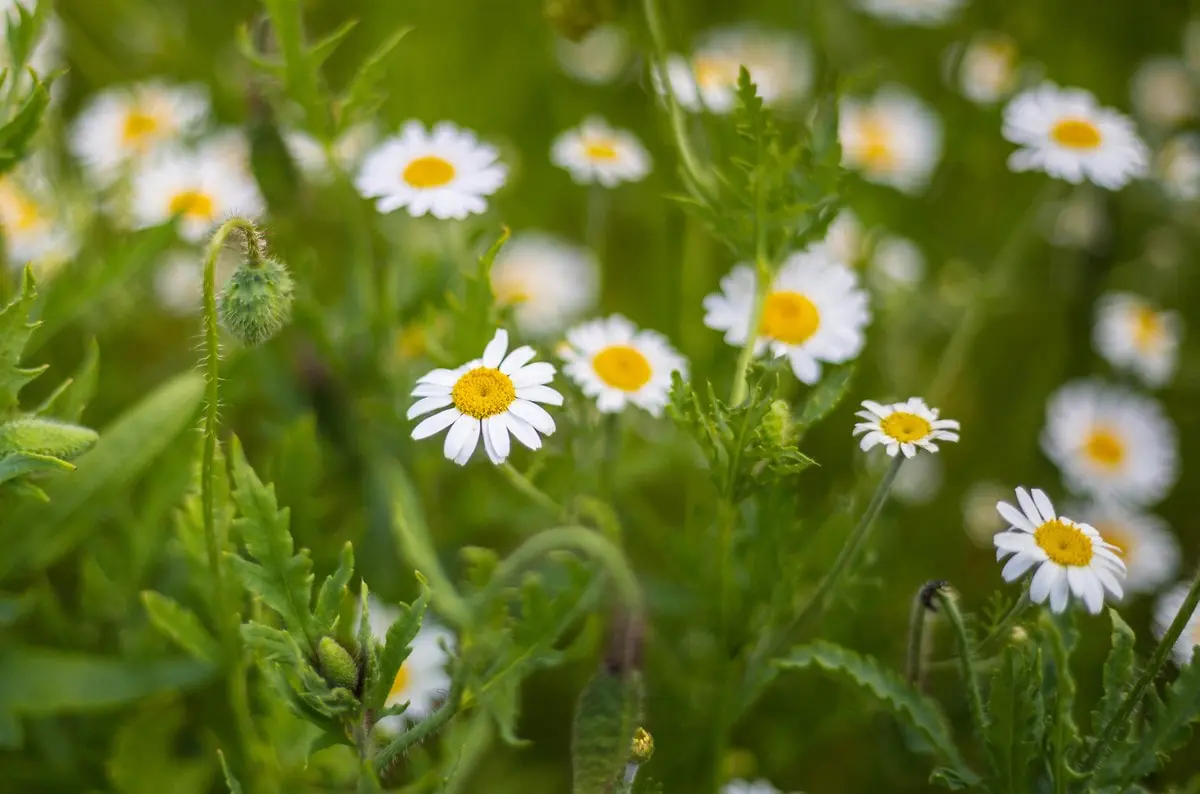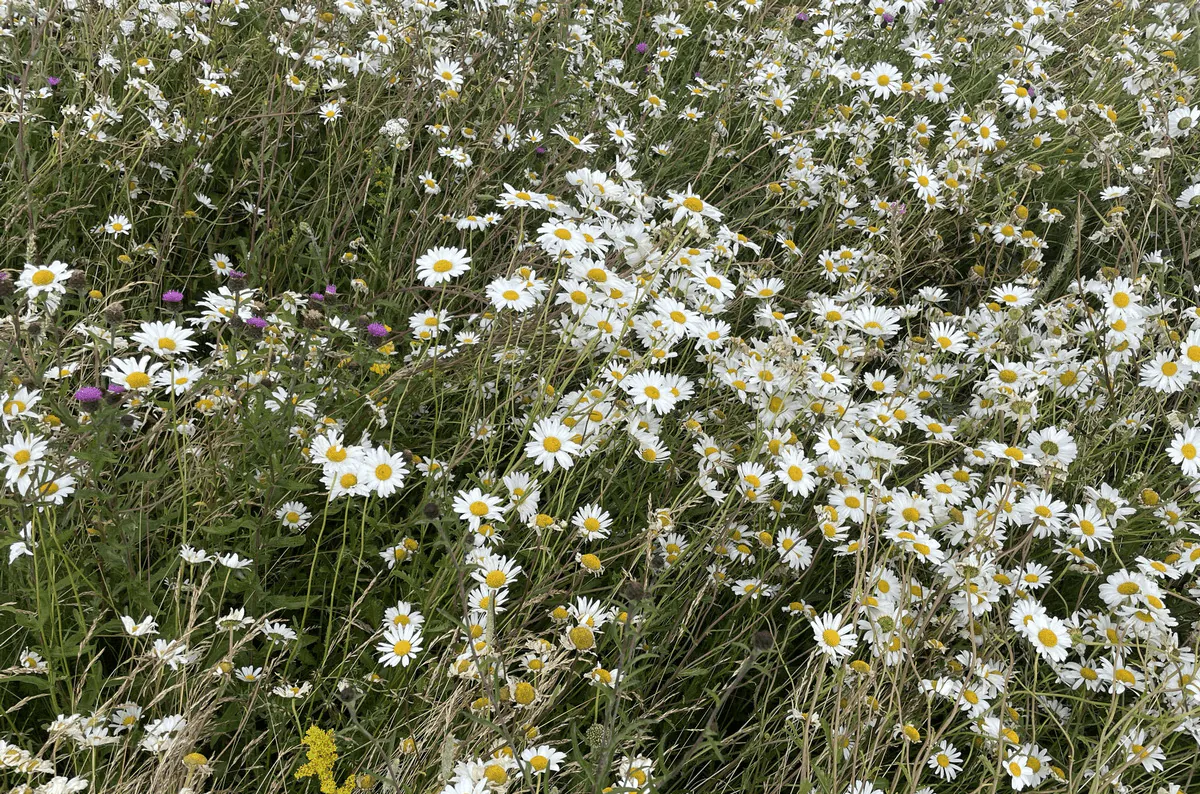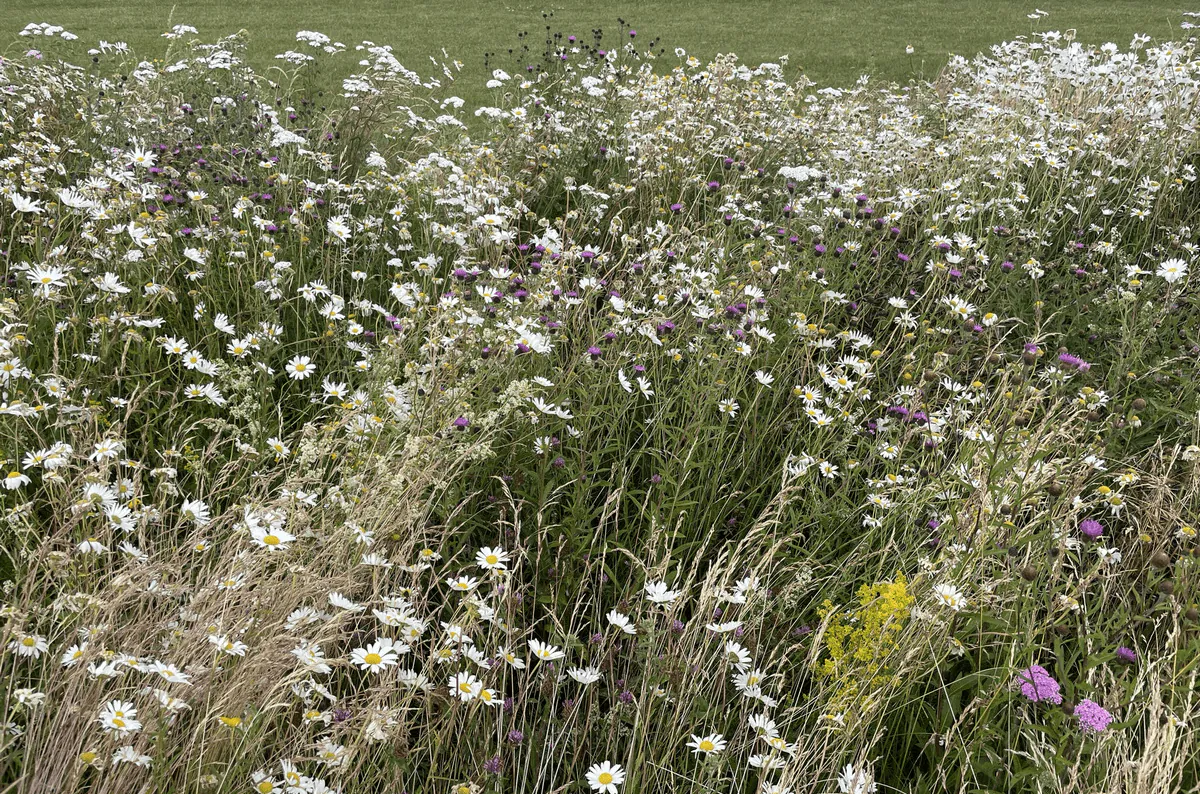When to cut perennial wildflower meadows? What our research says
Wildflower management continues beyond preparation and sowing, with cutting also playing a role in how meadows perform.

At our Horizon Wiltshire site, we conducted a trial to determine if more regular cutting when establishing wildflower meadows can increase the abundance of perennial species and suppress weed growth when sowing a standard 80:20 mixture.
In this case, we used WFG4 Neutral Soils as the 80:20 mixture. It comprises six grass species and a variety of wildflowers, including the likes of Oxeye daisy, Common knapweed, Birdsfoot trefoil, Salad burnet and Sainfoin.
Wildflower research findings
The trial was sown in spring 2020, with species assessments and groundcover assessments made in 2020 and 2021. While two years’ data doesn’t indicate long-term persistency, there are interesting findings relevant to the topic of when to cut a wildflower meadow. Two wildflower meadow management schedules were used in the trial:
- One-cut: Sow; leave to grow; cut wildflowers to 40 mm in August and remove clippings.
- Biweekly cutting: Sow; leave to grow; prevent flowering to create dense matt, top and remove (biweekly) at 40-70 mm.
In the first year, cutting wildflowers biweekly produced approximately 62% grass compared with 42% for the one-cut regime. Weed levels were also similar (16% versus 15%), though the wildflower percentages were higher for one-cut.

We were aiming to suppress weeds in the first year and that appears to work but we need further studies to ascertain the best balance between species modification and weed suppression.
In the second year, the grass levels were similar, though Oxeye daisy was more prevalent in the one-cut trial plots. Meanwhile, the biweekly plots had greater proportions of Common knapweed and Lady’s bedstraw.

At the end of 2022, there were similar grass and wildflower levels for each cutting regime. However, the key differences included higher proportions of Sainfoin and Salad burnet for the biweekly plots.
When to cut wildflower meadows? The verdict
From the research, there is a very slight suggestion that biweekly wildflower cutting in the establishment year aids the persistence of established species. Meanwhile, time can lead to a change in biodiversity over the years following initial wildflower meadow management practices.
In our years of experience sowing and establishing wildflower meadows, we have found it can take five to seven years of maintenance to achieve balance in a meadow. During the first few years, some wildflower species can dominate and time and patience are required. Anyone guaranteeing a broad range of species and a balanced equilibrium in a wildflower meadow in the first year is risking their reputation.
To learn more, we are conducting a further study to look at a wider number of wildflower cutting regimes to determine the effects. Beyond that, we plan to look at cutting regimes coupled with a different percentage of wildflowers to grass in mixtures. We will report back when we know more.
Our experts are available to help you select the ideal wildflower seed mixture for your amenity space. Contact us with your enquiry.


